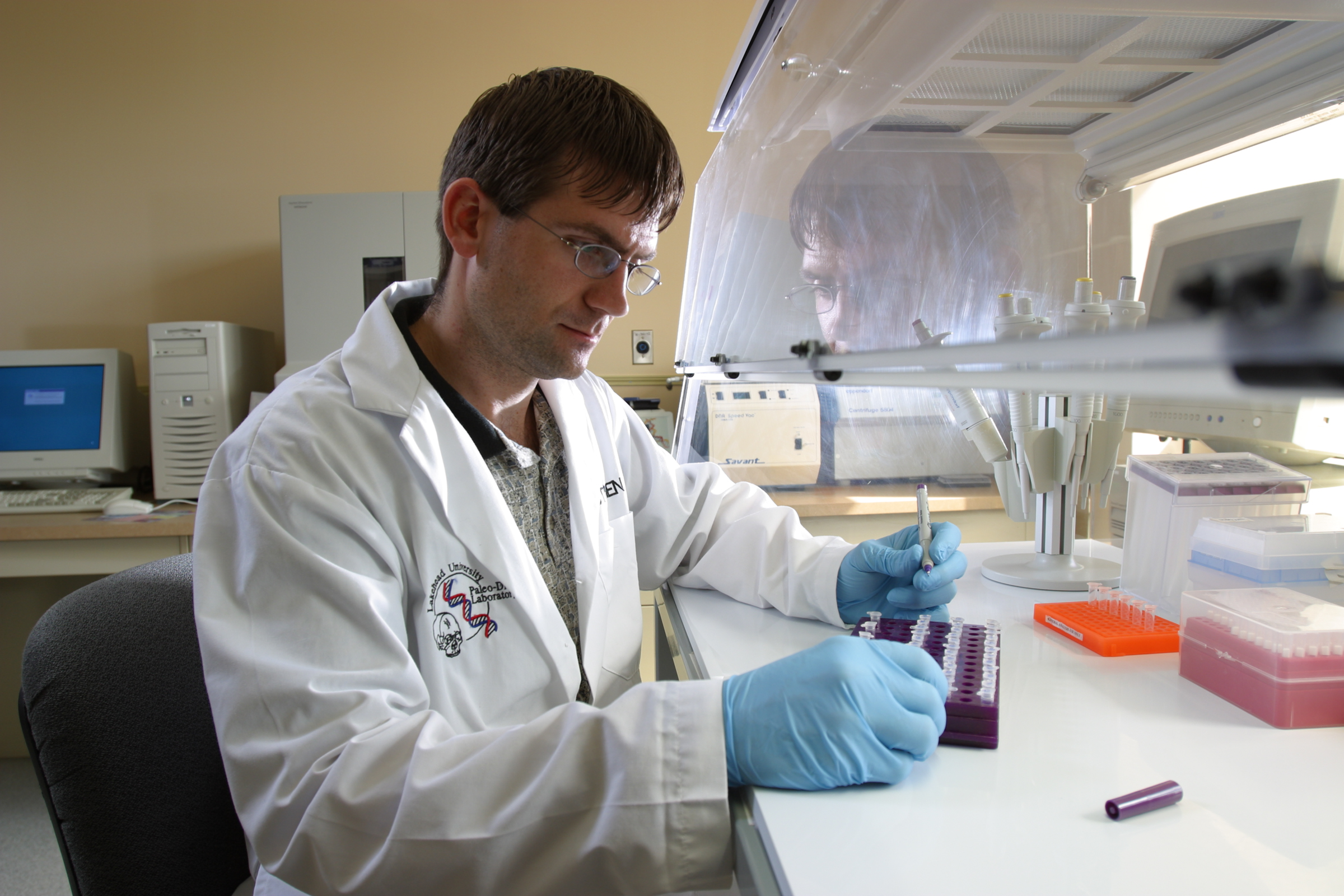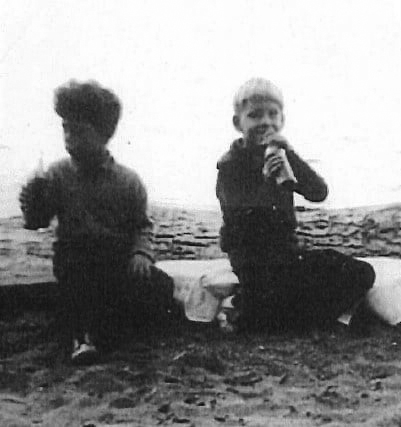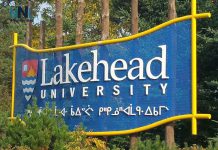By Tracey Skehan
THUNDER BAY – The groundskeeper was clearing brush in Vancouver’s Stanley Park in 1953 when something crunched underfoot.
The man had stumbled upon skeletal remains buried beneath layers of leaves and debris. The bones were small, but they appeared to be human. When officers from the Vancouver Police Department (VPD) arrived, they quickly established that it was a crime scene.
Two children had been bludgeoned with a hatchet laying nearby and covered with a fur coat. Detectives also found two children’s aviation caps, a woman’s size 7½ penny loafer, and a lunchbox containing petrified food. It was obvious that the murders had been committed years earlier, around 1947, but no one had ever reported the children missing.
Dubbed the “Babes in the Woods Case,” it would become Vancouver’s oldest unsolved crime.
“These murders have haunted generations of homicide investigators,” said Inspector Dale Weidman, the current commanding officer of the Vancouver Police Department’s Major Crime Section.
Over the decades, investigators were able to determine two crucial facts: they were the skeletons of two young boys and these boys were half-brothers. Originally, it had been assumed that the smaller skeleton was that of a girl. What the police couldn’t discover were the identities of the children.
That is until February 2022—nearly 70 years later—when the case broke wide open. The police revealed that the children were seven-year-old Derek D’Alton and six-year-old David D’Alton.
Inspector Weidman explained that they “…presumed that the person who killed Derek and David had likely passed away. But at this stage…it was always about giving these boys a name and finally telling their story.”
The Lost Boys
The key to unlocking the Babes in the Woods mystery was found by Lakehead University’s Paleo-DNA Lab. In March 2021, Redgrave Research Forensic Services contacted the Lab on behalf of the Vancouver Police. Redgrave planned to use techniques from the emerging field of genetic genealogy, and they needed the Paleo-DNA Lab to assist them because of its expertise handling ancient and degraded DNA.
“Ancient or degraded DNA is anything that’s been sitting out in the environment for a period of time,” explains Lab Manager Stephen Fratpietro. “Sunlight and water damage, for example, make DNA degrade rapidly.”

Fratpietro, who has several degrees from Lakehead, volunteered with the Paleo-DNA Lab when he was a chemistry student before being hired by the Lab in 2001. When Redgrave got in touch last year, Fratpietro says, “They sent us a tooth and a piece of the cranium from each child to extract nuclear DNA that could then be sent to another lab for whole genome sequencing.”
Stephen Fratpietro (BSc’97/HBSc’98/MSc’01/BEd’01) says: “It’s gratifying when we’re able to solve a mystery and make a difference.” Other high-profi le cases the Paleo-DNA Lab has unravelled include identifying a member of the disastrous 1845 Franklin Arctic Expedition and the Titanic’s Unknown Child.
Redgrave didn’t provide any background information about the samples to ensure that the results weren’t biased.
“They just mentioned that it was a high-profile case, and nothing else,” Fratpietro says.
It took about a week to extract the DNA.
“We sterilize the surface first, then crush the bones into powder and chemically break them down so that we’re dealing with a solution,” Stephen says. “Then we isolate the DNA from the other components in the solution.”
Unfortunately, they couldn’t get enough DNA on the first attempt. So, in August 2021, Redgrave sent a larger piece of the older boy’s cranium. On this second attempt, Fratpietro’s team was able to extract enough material for the DNA to be sequenced.
This allowed Redgrave to compare the brothers’ DNA to the DNA databases of private genealogical and ancestry companies. When they ran their search, Redgrave found a relative—one of the boy’s maternal grandparents. VPD lead investigator, Detective Constable Aida Rodriguez, said that a family member had uploaded a DNA sample with the express purpose of learning what had happened to their relatives.
“The story that had been handed down to them was that the boys had been removed from the residence by the [social services] ministry,” the detective constable said. “Even though this family member did their best to talk about the boys and try to get the story, the only response they got from family was silence. The absence of the boys was never discussed.”
Solving a 70-Year-Old Mystery
In a media release, the Vancouver Police Department said they believed that Derek and David were descendants of Russian immigrants who came to Canada at the turn of the 20th century. The police also revealed that the boys attended the Henry Hudson Elementary School in Vancouver’s Kitsilano neighbourhood and that one of the boys’ close relatives lived near the entrance to Stanley Park.
Eve Lazarus, an author, journalist, and host of the true crime podcast, Cold Case Canada, was able to add more details to the account of the Babes in the Woods case when she interviewed Derek and David’s great-niece, Ally Brady. Brady only became aware of her uncles’ existence while looking through a family album with her grandmother Diane, who was reluctant to talk about her younger brothers Derek and David.
“I remember my mother sharing stories with me about her mother’s poverty and how they used to jump out of windows at places they were renting in Vancouver to avoid having to pay because they were just so poor,” Ally said in a 2022 story written by Lazarus.

In 2020, Brady submitted a sample of her DNA to 23AndMe while Brady’s mother Cindy submitted a sample from Diane to MyHeritage in the hopes of discovering if Derek and David were still alive. One police theory was that the boys were killed by their mother who then committed suicide, which would explain the presence of the fur coat and the women’s penny loafer at the site of the murders.
Lazarus, though, has doubts, especially since the boys’ mother Eileen Bousquet died in 1996 at the age of 78.
Journalist Eve Lazarus says that Eileen’s granddaughter Cindy doesn’t believe that Eileen killed her children. Cindy described Eileen as a lovely, gentle woman. In talking to Derek and David’s family, Lazarus also confirmed that Eileen was of both Métis and Russian heritage. Photo Credit: Vancouver Police Department
For Inspector Weidman, finally identifying Derek and David brings a sense of resolution as well as sadness.
“Although significant folklore has surrounded this case for years, we must not forget that these were real children who died a tragic and heartbreaking death.”
Reprinted with permission from Lakehead University.






